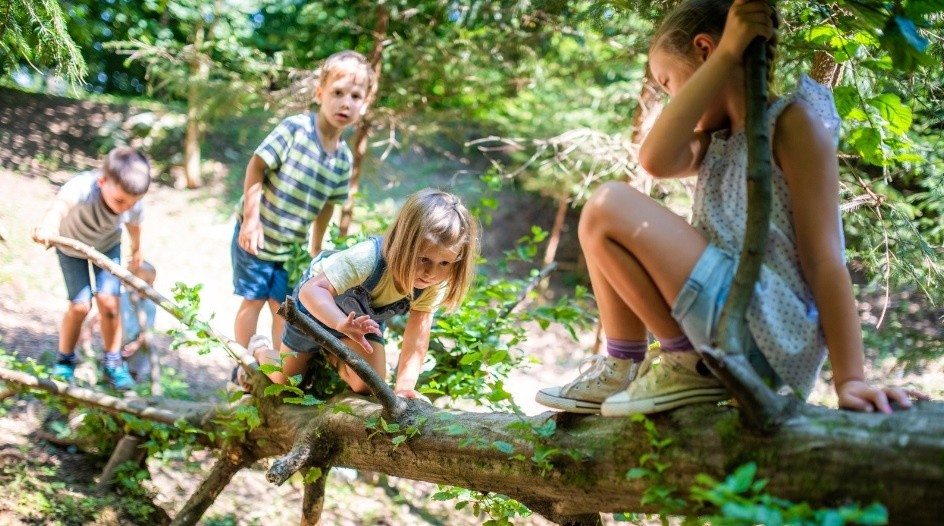
20 April 2021
Nature-based free play

Children learn through exploring the world around them, and play is a fundamental tool for this process. Thus, free play, meaning play that is not structured by an adult, is especially important for child development.
In addition, play with natural elements such as stones, branches, leaves, and water can bring additional benefits for children's health and well-being.
Benefits of free play
Free play is essential for developing creativity, imagination, and curiosity in children. It allows children to experiment, test hypotheses, and discover new things on their own. Additionally, it helps children develop social and emotional skills such as the ability to share, collaborate, negotiate, and resolve conflicts.
According to psychologist and researcher Peter Gray, free play is a key element for children's cognitive, emotional, and social development. Gray believes that free play is "the most natural and effective form of learning."
Nature materials Play with natural elements, also known as play with natural materials, is a form of play that involves the use of natural elements such as stones, leaves, water, sand, soil, and mud. This form of play offers additional benefits for children's health and well-being.
A study published in the journal Health & Place (2014) showed that play with natural elements is associated with a lower risk of childhood obesity, in addition to improving children's mental and emotional health. Another study published in the journal PLOS ONE (2015) showed that children who play with natural elements exhibit greater creativity and problem-solving abilities.
Nature deficit
Writer and activist Richard Louv is a proponent of play with natural elements. He argues that the lack of contact with nature has contributed to a range of physical and mental health problems in children, such as obesity, attention deficit, and hyperactivity. Louv believes that play with natural elements can help combat these problems and promote a deeper connection between children and nature.
There are many different ways to play with natural elements. Children can build sandcastles at the beach, jump in puddles after a big rainstorm, build shelters, or simply explore the nature around them. Play with natural elements has only one limitation - the imagination!